Subtotal: 660$
Blog Replica Watch
Mineral Glass and Sapphire Glass: Key Differences Every Watch Buyer Should Know
Mineral glass and sapphire glass are two of the most common materials used for watch crystals. They differ significantly in clarity, scratch resistance, durability, and cost. This guide by King Replica will help you compare these two materials in detail and offer insights on how to choose the right watch glass for long-term use.
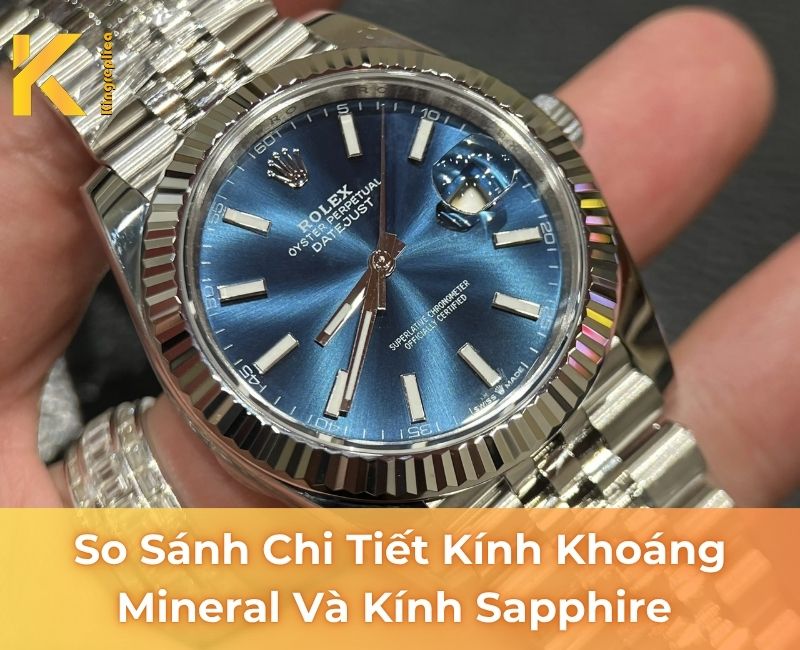
1. What Is Sapphire Glass in Watches?
Sapphire glass is a premium crystal material, commonly found in genuine high-end watches due to its hardness rating of 9 on the Mohs scale—just below diamond. It’s made from synthetic aluminum oxide (Al₂O₃) grown in labs via the Verneuil method, then sliced, polished, and shaped to deliver near-perfect transparency and exceptional scratch resistance.
There are three popular types of sapphire glass:
- Thin-coated sapphire: A light sapphire coating on mineral glass, prone to fogging and scratching over time.
- Thick-coated sapphire: Offers better scratch protection but can still crack under strong impact.
- Solid sapphire crystal: Crafted entirely from synthetic sapphire; nearly scratch-proof and used in luxury timepieces or high end replica watches.
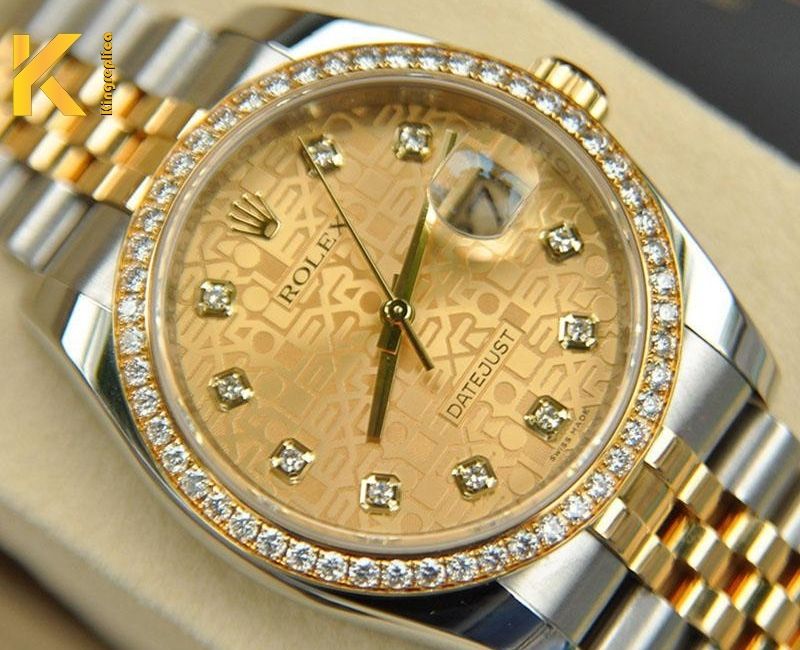
2. What About Mineral Glass Watches?
Mineral glass (also known as mineral crystal) is heat – or chemically – treated tempered glass with hardness ranging from 6 to 7.5 on the Mohs scale. It’s a popular choice for entry-level and mid-range watches. Key advantages include lower cost, decent shock resistance, and the ability to be polished to remove minor scratches.
The three main types include:
- Standard mineral glass: Inexpensive, easy to scratch but also easy to polish.
- Hardened mineral glass: Treated for better strength and scratch resistance.
- Mineral glass with sapphire coating: Offers improved surface protection while maintaining affordability.
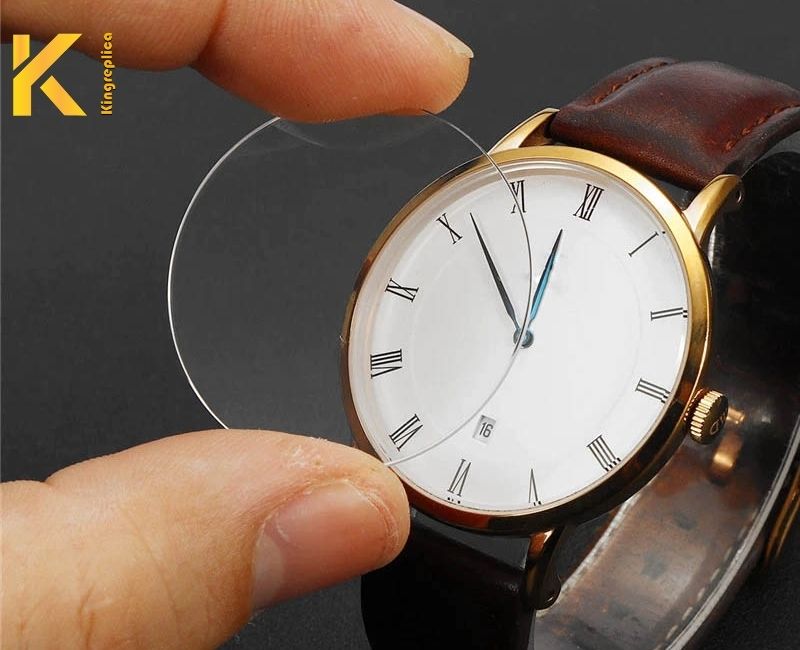
3. Mineral Glass vs Sapphire Glass: Detailed Comparison
| Criteria | Mineral Glass | Sapphire Glass |
|---|---|---|
| Clarity | High, but may fog or scratch over time | Extremely clear; can reflect glare if uncoated |
| Hardness (Mohs) | 6–7.5; good impact resistance | 9; second only to diamond, highly scratch-resistant |
| Impact Resistance | More elastic; less likely to shatter | Brittle; prone to cracking under heavy impact |
| Scratch Resistance | Easily scratched but can be polished | Nearly scratch-proof; scratches cannot be polished out |
| Price | Affordable | Expensive |
| Commonly Used In | Entry-level to mid-range watches | High-end watches and premium replicas |
4. Which Should You Buy: Mineral Glass or Sapphire Glass?
Choosing between mineral glass and sapphire glass depends on your usage and budget.
If you’re active, work with your hands, or prefer a watch that’s easy to maintain and replace, mineral glass offers practicality, durability, and affordability for daily use.
If design refinement and long-term clarity matter more and you’re willing to invest, sapphire glass provides exceptional scratch resistance and lasting beauty.
5. How to Distinguish Mineral vs Sapphire Glass
Here are 5 methods to tell them apart:
- Water Drop Test: A drop on sapphire stays round and doesn’t spread. On mineral, it spreads out.
- Scratch Test: Sapphire resists scratches from fingernails or keys. Mineral may show fine marks.
- Light Reflection: Sapphire reflects soft blue hues (if anti-reflective coated); mineral glass is more reflective.
- Touch Sensation: Sapphire feels cooler to the touch; mineral glass feels warmer.
- Hardness Testing Pen: Sapphire scores 9, while mineral ranks around 5–6.
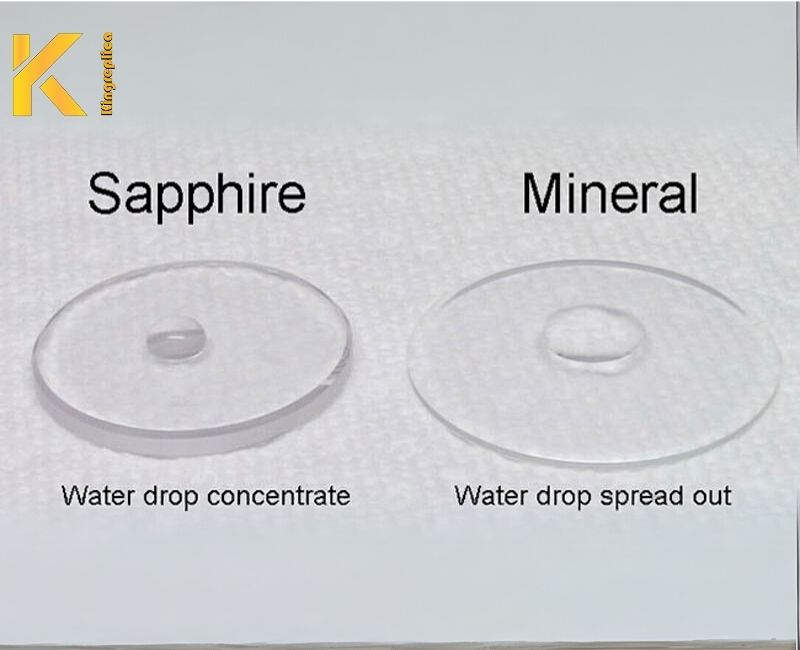
6. How to Protect Watch Glass for Long-Term Use
Regardless of material, improper care can lead to scratches or cracks. Here’s how to maintain watch crystal beauty:
- Avoid hard impacts: Though sapphire is tough, it can crack from side hits.
- Keep away from sharp objects: Metal edges, belt buckles, or jewelry can scratch the surface.
- Wipe with soft cloths: Use microfiber to remove sweat and dust without damaging anti-reflective coatings.
- Service regularly: Periodic checks help detect edge cracks or coating issues early.
Both mineral glass and sapphire glass have unique strengths and suit different needs. If you prefer a cost-effective, impact-resistant option that’s easy to maintain, mineral glass is a sensible choice. For long-lasting clarity and scratch resistance with a premium look, sapphire glass is the better investment. Stay tuned to King Replica for more insights into watch materials and care.

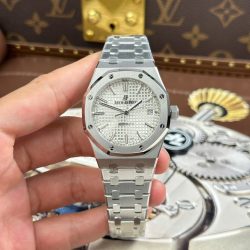 Audemars Piguet Royal Oak 15450 Knock Off Watches White Dial Automatic Movement ZF Factory 37mm
Audemars Piguet Royal Oak 15450 Knock Off Watches White Dial Automatic Movement ZF Factory 37mm 
 Tiếng Việt
Tiếng Việt